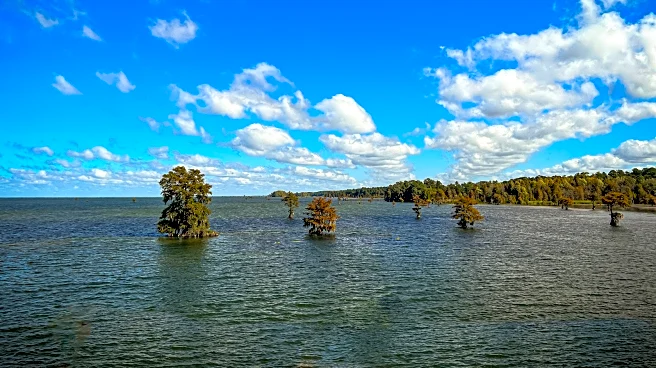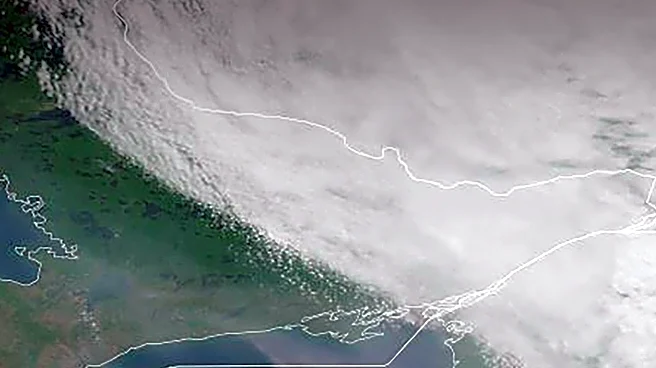What's Happening?
A low-pressure system is poised to affect South Carolina, particularly the Lowcountry region, with increased chances of showers and thunderstorms over the Labor Day weekend. The system, moving from the Southern Plains, is expected to bring instability and moisture, leading to widespread showers, especially along the coast. The Upstate and most of the Midlands are likely to remain dry, while the Lowcountry faces a marginal risk of flash flooding. The system will remain east of South Carolina, contributing to the instability and enhancing the likelihood of afternoon thunderstorms, which could become more intense at times.
Why It's Important?
The potential for flash flooding in the Lowcountry poses a risk to residents and infrastructure, particularly during the busy Labor Day weekend when travel and outdoor activities are common. The increased rainfall and thunderstorms could disrupt plans and lead to hazardous conditions. This weather pattern highlights the ongoing challenges of managing severe weather events, which can have significant impacts on local economies and public safety. The situation underscores the importance of preparedness and responsive measures to mitigate the effects of such weather events.
What's Next?
As the low-pressure system continues to influence the region, residents and local authorities will need to monitor weather updates and prepare for possible flash flooding. Emergency services may be on alert to respond to any incidents resulting from the severe weather. The system's progression will be closely watched to assess its impact and any changes in the forecast. Community awareness and readiness will be crucial in minimizing the potential adverse effects of the weather conditions.
Beyond the Headlines
The recurring threat of severe weather events in South Carolina highlights broader concerns about climate change and its impact on weather patterns. The increased frequency and intensity of such events may prompt discussions on infrastructure resilience and climate adaptation strategies. Long-term planning and investment in flood defenses and emergency response capabilities could become more pressing as communities seek to safeguard against future risks.














